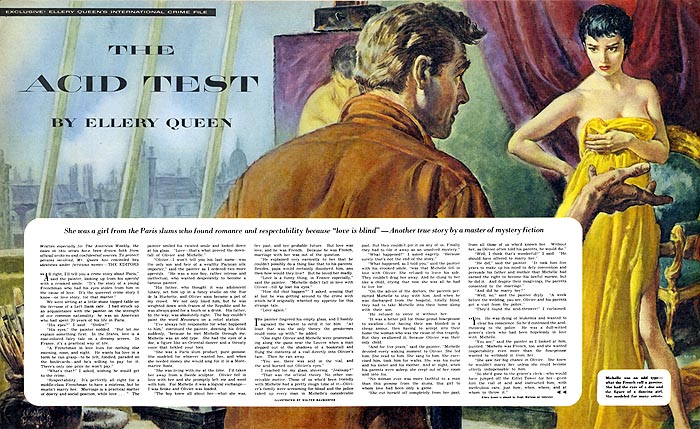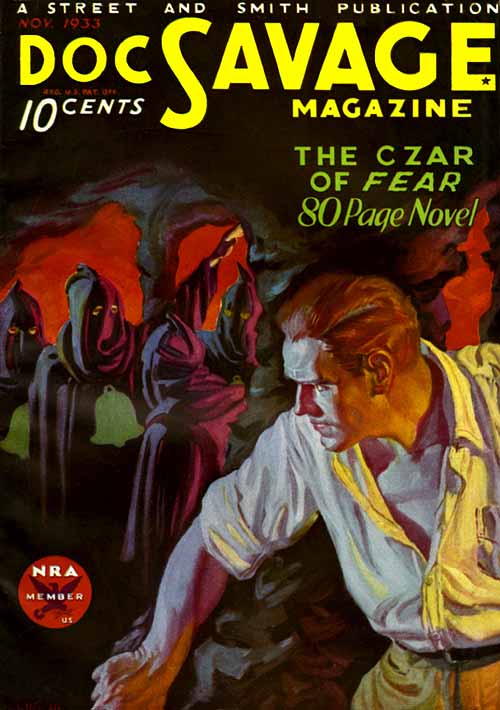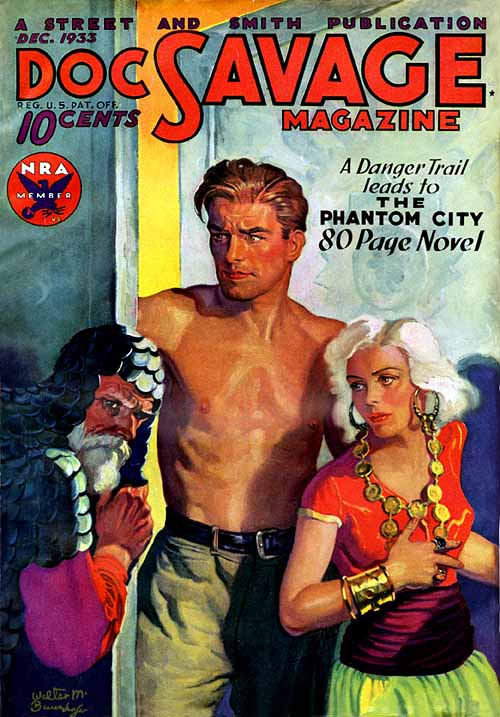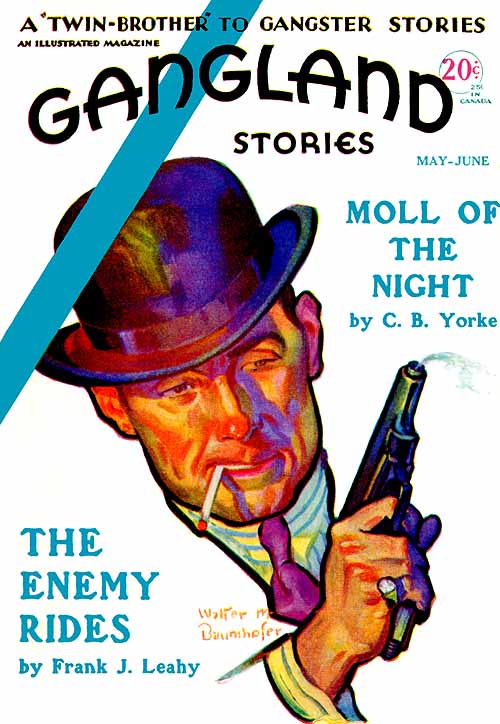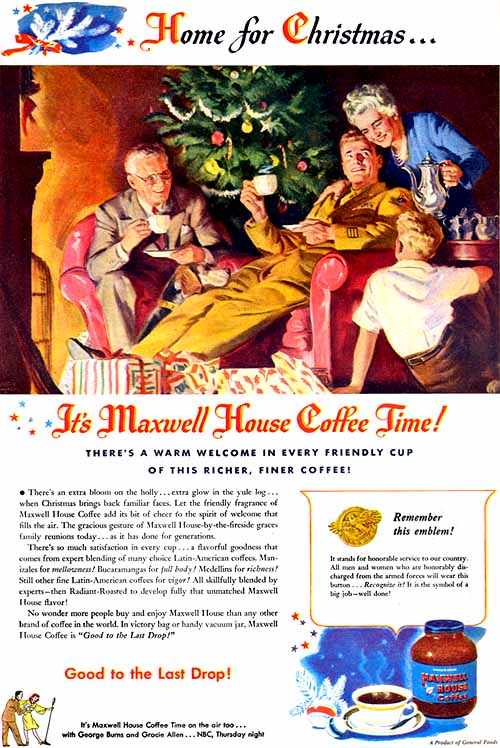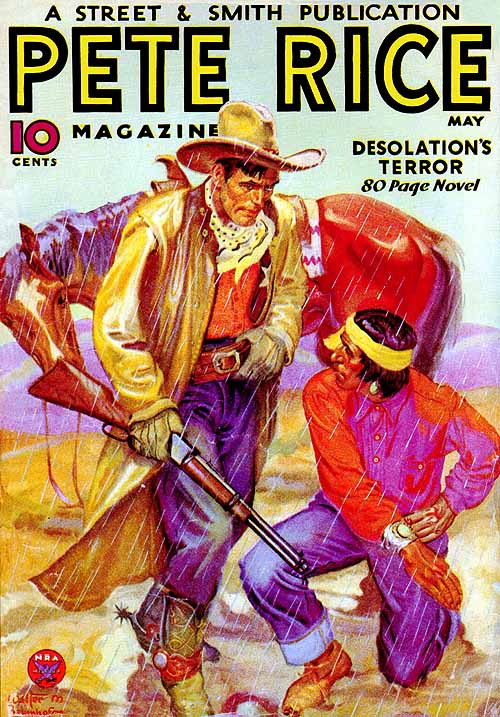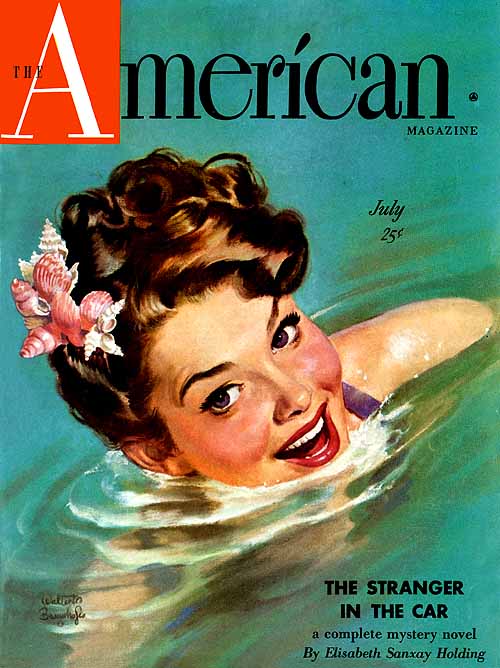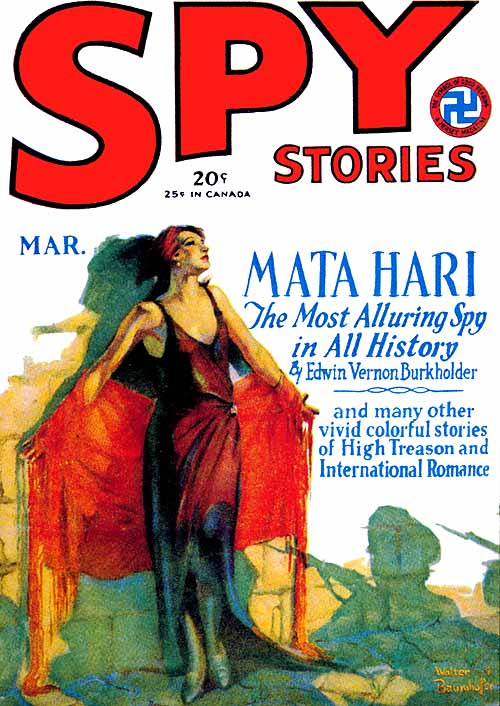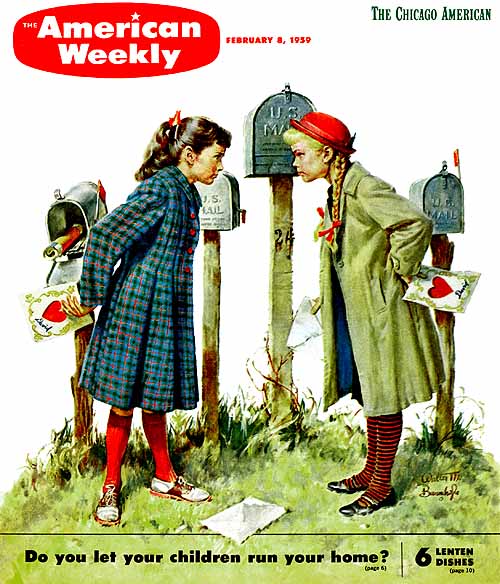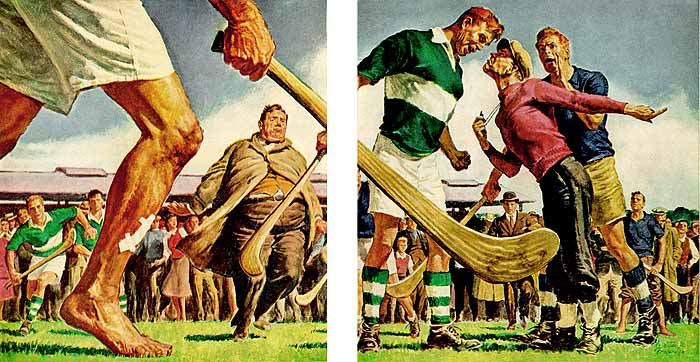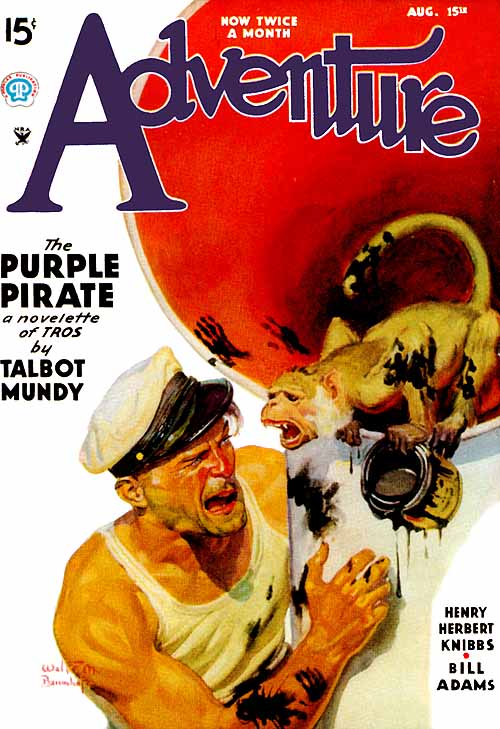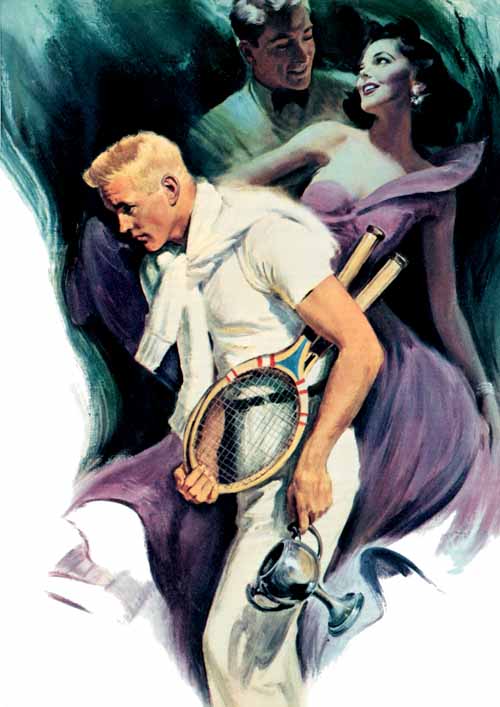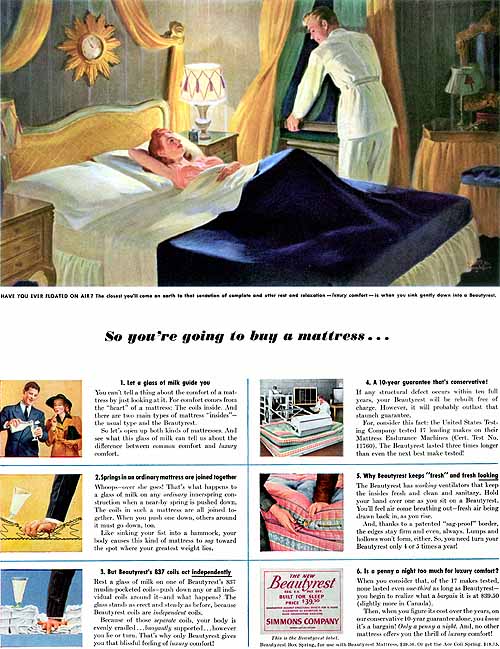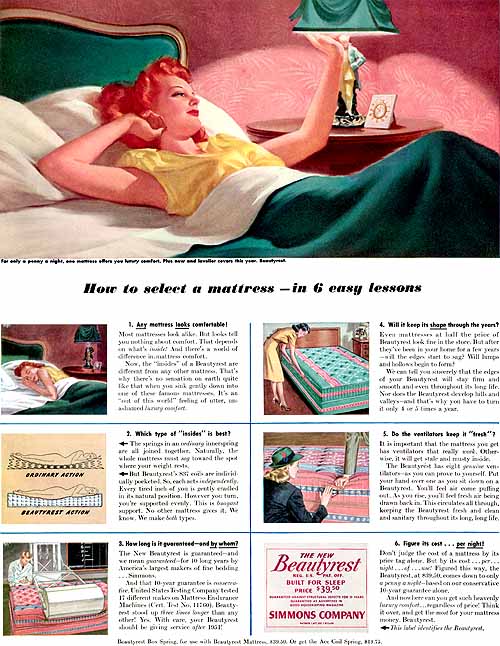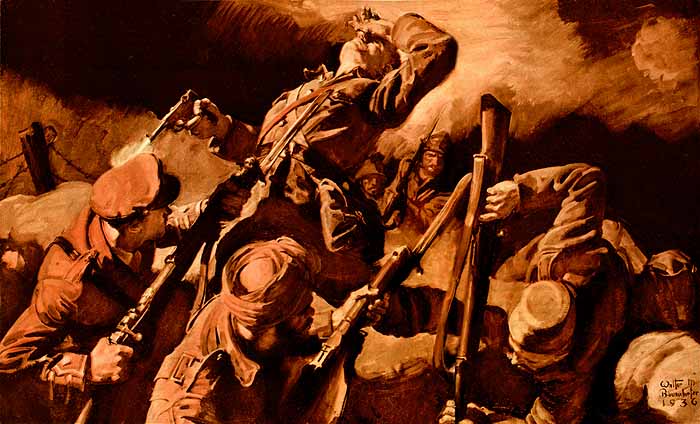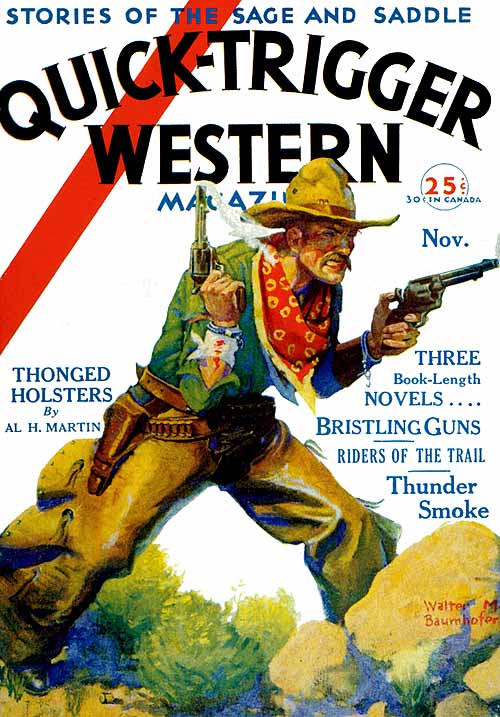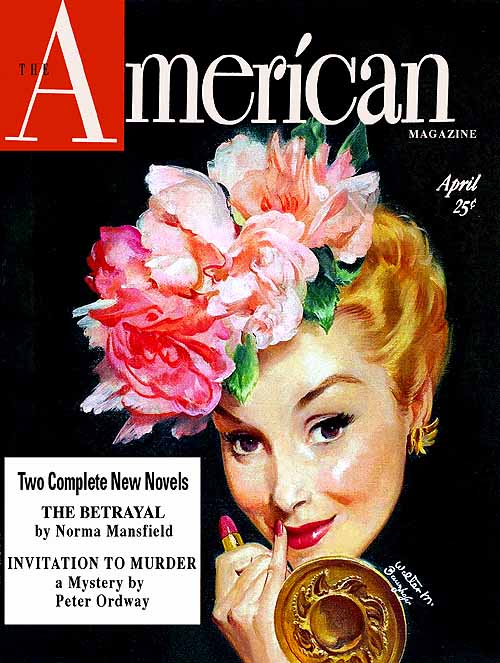
|
American Art Archives scans and text are copyrighted material. |
|
Back |
|
Walter Baumhofer
(1904 - 1987)
Baumhofer remains best known as the King of the Pulps, but his long legacy reaches far beyond that moniker. Blessed with a long and fluid career, Baumhofer was one of the few artists who successfully bounced from the pulps to the slicks, thanks in large part to his exceptional skill as an artist. He could capture a pretty girl in a handsome man's arms as easily as he could grab readers with a pulp monster threatening the world. He started at Adventure magazine, doing story interiors when fellow artist, H Winfield Scott, told him he'd make a more money with color covers. Baumhofer liked the paycheck covers offered and, because of his talent, he was soon churning out crime, western, and thriller paintings. Some 550 pulp covers grace his resume, including Detective Tales, Fire Fighters, Wild West Weekly, Ace High, Gangland, Gangland Stories, Danger Trail, Western Story, The Spider, Spy Stories, Dime Mystery, Dime Detective, and of course, Adventure. Baumhofer also did the first Doc Savage covers (an art director told Baumhofer that Savage was "a Man of Bronze -- known as Doc, who looks very much like Clark Gable. He is so well built that the impression is not of size, but of power"; Baumhofer got most of this impeccably, though his Savage does not look like Gable. In fact, he has an uncanny resemblance to Baumhofer's other serial hero, the cowboy, Pete Rice. There were even bigger bucks to be made in the slicks and by 1936, Baumhofer was looking to expand. He had little trouble making the transition, starting with Liberty, and then had success after succeeds with American Weekly, Cosmopolitan, Woman's Home Companion, Country Gentleman, This Week, Macao’s, Redbook, American Magazine, Woman's Day, Collier's, Esquire. As the ledge on which illustrators could stand grew narrower in the later 50s, Baumhofer moved to the more rugged, out-doorsie themes he'd always had a knack for, producing vivid calendar pieces as well as cover and interior work for True, Argosy, Sports Afield, Outdoor Life. |
|
American Weekly, "The Acid Test" (1954) Baumhofer - 001A
|
|
American Weekly, "The Spy Wore Crinoline" (1955) Baumhofer - 002A
|
|
Doc Savage (1933) Baumhofer - 003
|
|
Doc Savage (1933) Baumhofer - 004
|
|
Doc Savage (1936) Baumhofer - 005
|
|
Doc Savage (1936) Baumhofer - 006
|
|
Doc Savage (1936) Baumhofer - 007
|
|
Gangland Stories (May-June 1931) Baumhofer - 008
|
|
Maxwell House Coffee, "Home for Christmas..." (1945) Baumhofer - 009
|
|
Pete Rice Magazine (May 1934) Baumhofer - 010
|
|
American Magazine (July 1949) Baumhofer - 011
|
|
Country Gentleman, "Beam to Brazil" (April 1943) Baumhofer - 012
|
|
Spy Stories (March 1929) Baumhofer - 013
|
|
American Weekly (8 February 1959) Baumhofer - 014
|
|
Dime Mystery (April 1939) Baumhofer - 014
|
|
Argosy, "The Skull-Crackers" (March 1954) Baumhofer - 016
|
|
Adventure (15 August 1935) Baumhofer - 017
|
|
American Magazine, "The Silver Dream" (August 1950) Baumhofer - 018
|
|
Simmons Beautyrest (1941) Baumhofer - 019
|
|
Simmons Beautyrest (1941) Baumhofer - 020
NOTE: Most people think that the sleeping arrangement below is the "censored" or "prudish" one and the one above is the "normal" one. This is a modern way of thinking, but it's lacking. Simmons sold both large beds and singles for couples. Some couples (my own folks) don't sleep well together (my father, despite his polio, was a very active sleeper and either bruised mom in his sleep or just made a restful night for her impossible). So when you see couples in seperate beds in older movies and TV shows, keep in mind that it was not just a case of censorship. Some couples actually slept that way (and still had kids...wonder how they did it).
|
|
Simmons Beautyrest (1941) Baumhofer - 021
|
|
Liberty, "Hell in the Holy Land" (1936) Baumhofer - 022
|
|
Quick-Trigger Western (November 1929) Baumhofer - 023
|
|
The American (April 1949) Baumhofer - 024
|

